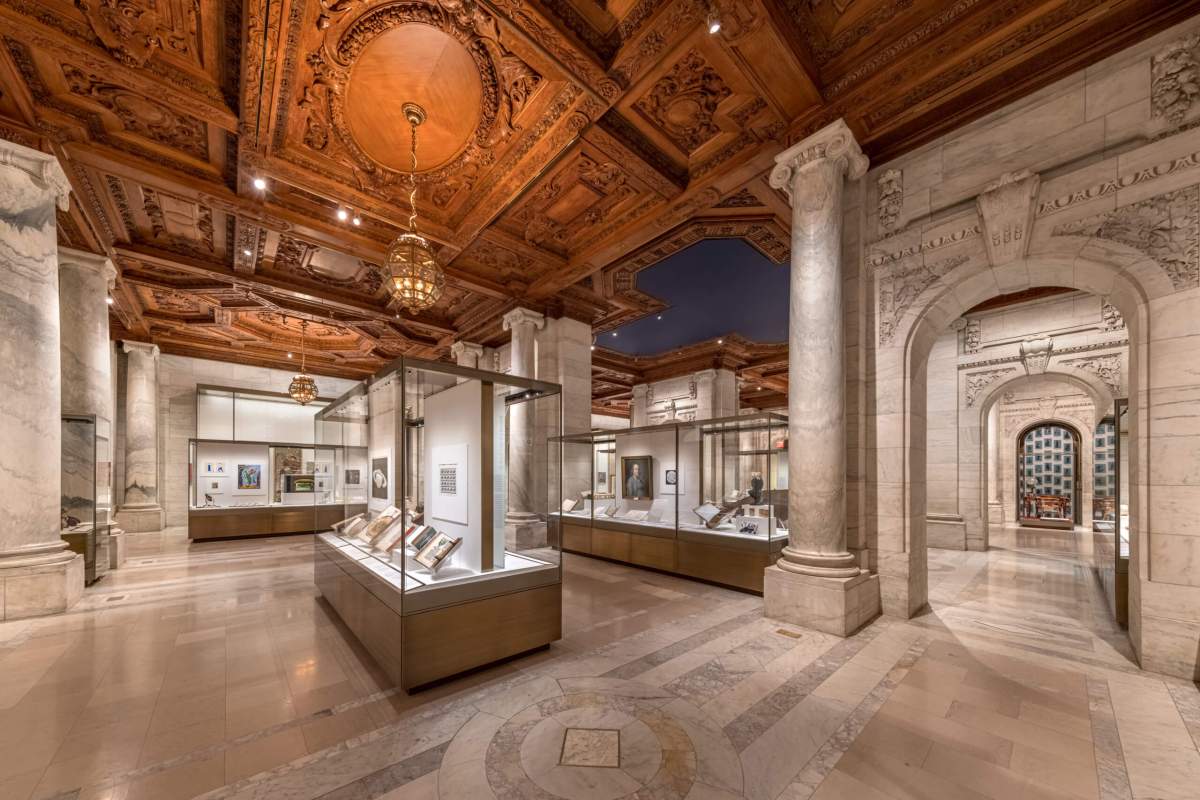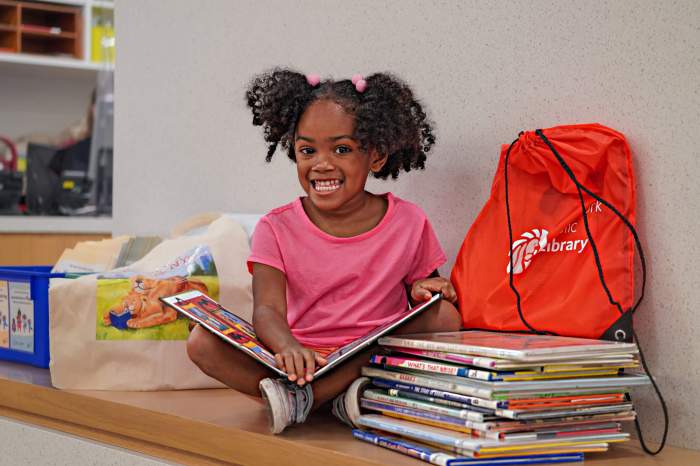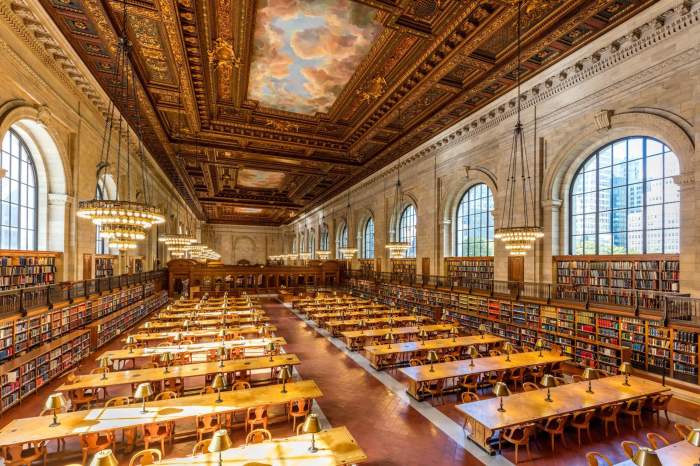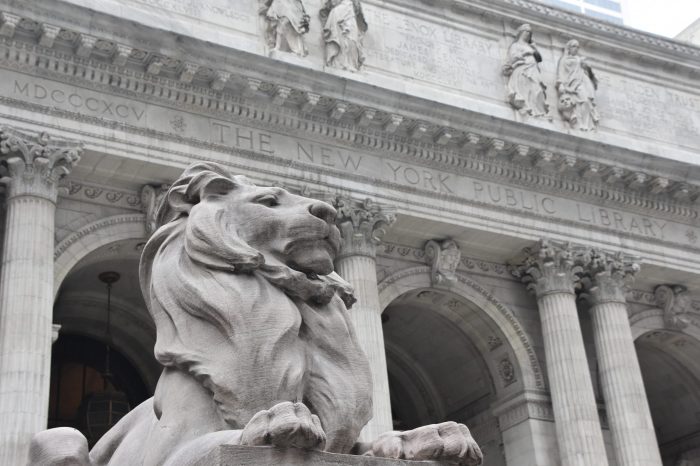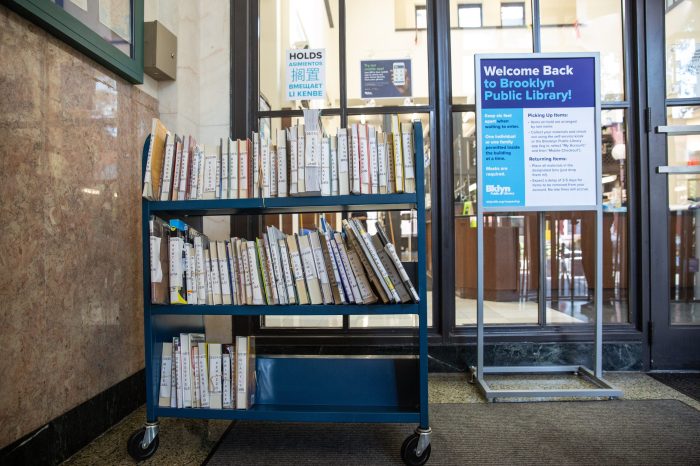People stand in line in front of Gottesman Hall inside of The New York Public Library, waiting to enter a room filled with age-old artifacts, letters, books and other items so rare they can only be seen here.
The New York Public Library’s first permanent exhibition, featuring more than 250 rare and unique items from its research collections, opened to the public Friday. The exhibit showcases objects spanning 4,000 years of moments, movements and stories that have helped shape the world.
“I think it’s very interesting. It is like a little museum with a lot of memorabilia and artifacts,” said Cynthia Disla who visited the exhibit on Friday.
The free Polonsky Exhibition of The New York Public Library’s Treasures is located at the Library’s iconic Stephen A. Schwarzman Building on Fifth Avenue and 42nd Street in Gottesman Hall.
The exhibition is divided into nine different sections including Beginnings, Performance, Explorations, Fortitude, The Written Word, The Visual World, Childhood, Belief, and New York City. Each section tells the stories and importance behind each object and how it relates to a larger history.
“I’m hoping that it will become a must-see, like ‘you haven’t really been to New York unless you’ve been to the Polonsky Exhibition of The New York Public Library’s Treasures,” said Declan Kiely director of special collections and exhibits at The New York Public Library.
Some items on display include the only remaining copy of the letter Christopher Columbus sent to King Ferdinand’s court outlining his discovery, Gutenberg’s first printed Bible, Charles Dickens’ writing desk, the original dolls owned by the real-life Christopher Robin that inspired the Winnie The Pooh stories, manuscripts and typescripts of classic works by Virginia Woolf, Maya Angelou and Malcolm X and cue books from Broadway plays.
Rachel Buntrock, who visited the museum on Friday, came to see the original copy of the Bill of Rights, The Declaration of Independence in Thomas Jefferson’s hand and the rare items that cannot be seen anywhere else like Charles Dickens’ desk.
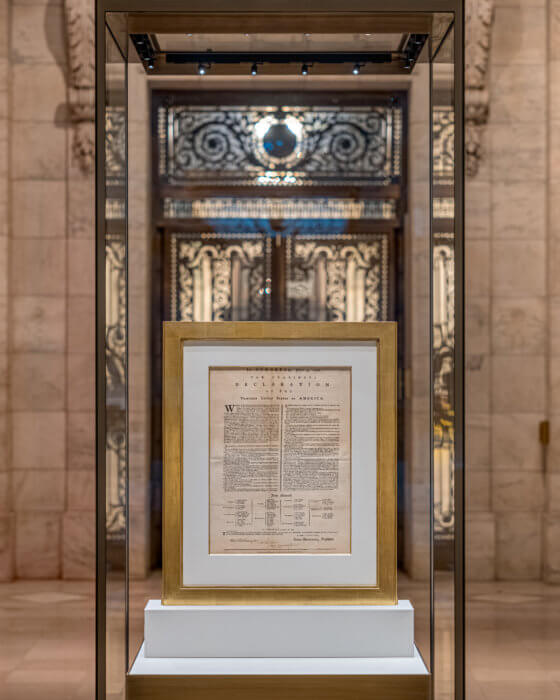
The Bill Of Rights displayed in the exhibition is not the final version and includes two amendments that are not included in the final version.
Cindy D’Auria said she learned “too much” from the exhibition.
“It’s nice these beautiful pieces are on display now for people to see them and not stored away,” Cindy said.
Steve D’Auria said he was shocked to see how the print, colors and text survived all these years.
An exhibit to spark curiosity, knowledge
Kiely hopes attendees gain enlightenment through pleasure and surprise.
“One of the things we’ve tried to do is include things that are unlike each other,” Kiely said. “Things you’d never expect to see in one place creates interesting juxtapositions and dialogues.”
The exhibit is sparking curiosity within its visitors.
Disla, who looked through the New York City section of the exhibit, said she plans to go home and research some of the things she learned during her visit.
Kiely said he wants people to be able to have visceral encounters with the materials. Many of the exhibits display how things work and came into existence in order to create a sense of wonder for audiences and to help them better understand the past to forge a better future.
“It gave me goosebumps,” said Aranza Rivas about a display in the Fortitude section of the exhibit where there is a bill of sale for a freeman’s purchase of his enslaved daughter displayed in the case.
“If we can educate people, that’s one of those steps to improve in the future,” Rivas said while looking at the items displayed in the Fortitude section. “If you teach what happened, you become more conscious of what’s going on. Exhibits should always be available and free for people because they help open your eyes.”
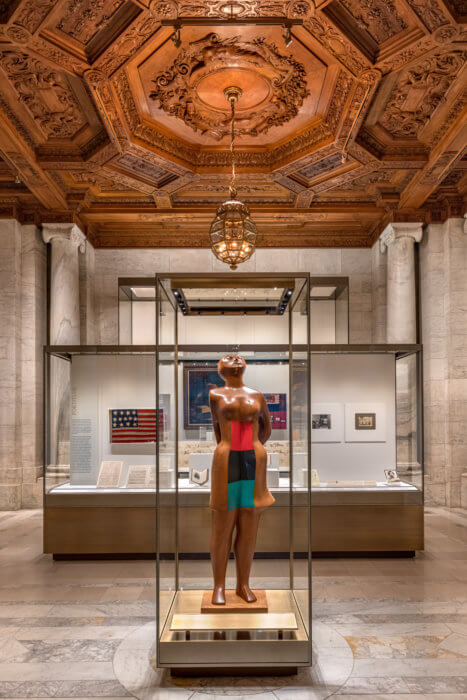
The exhibit includes audio and moving images as well.
Mabel Johnson was mesmerized by the screen during her visit on Saturday. She said the audio and video surprised her and made her experience more educational.
The exhibition draws from the library’s research centers: the Stephen A. Schwarzman Building, the Library for the Performing Arts, and the Schomburg Center for Research in Black Culture which have collected 45 million objects including rare books, manuscripts, photographs, prints, maps, ephemera, audio and moving images over the institution’s 126 years.
The exhibition will change over time. Section themes and individual items within those themes will rotate to expose the public to as much as possible.



